integration Use Case
EVS Cerebrum

Have a look at this use case to learn more about our EVS Cerebrum connector.
Cerebrum is a Broadcast Control System from EVS for ad-hoc control and monitoring of broadcast environments. DataMiner’s integration with Cerebrum allows the reading and setting crosspoints, salvos, and mnemonics.
Integrations with broadcast controllers usually happen in projects where DataMiner acts as a top-level orchestration platform to manage the complete life cycle of services, productions, and events from all angles, from secure onboarding of resources to monitoring of infrastructure and management of physical and virtual resources, including their connectivity, capacity, and availability.
The preparation for an event also requires establishing connectivity (i.e. setting crosspoints) between resources that DataMiner has reserved up front from its resource pools, for example to pre-configure feeds required for an upcoming fiber contribution job in the MCR. For this, one or multiple crosspoints commands (router level, source, destination) will be sent to Cerebrum.
Alternatively, DataMiner can also manage a studio production and reserve all resources, including the required people. Mnemonics (labels for sources and destinations) can be changed dynamically for the upcoming production to show the name of the camera operator instead of a default name like “CAM1”, and with that every operator using Cerebrum hardware or software router panels panels gets a more event-centric user interface.
Have a look at the data pages of our Cerebrum connector for more details.
USE CASE DETAILS
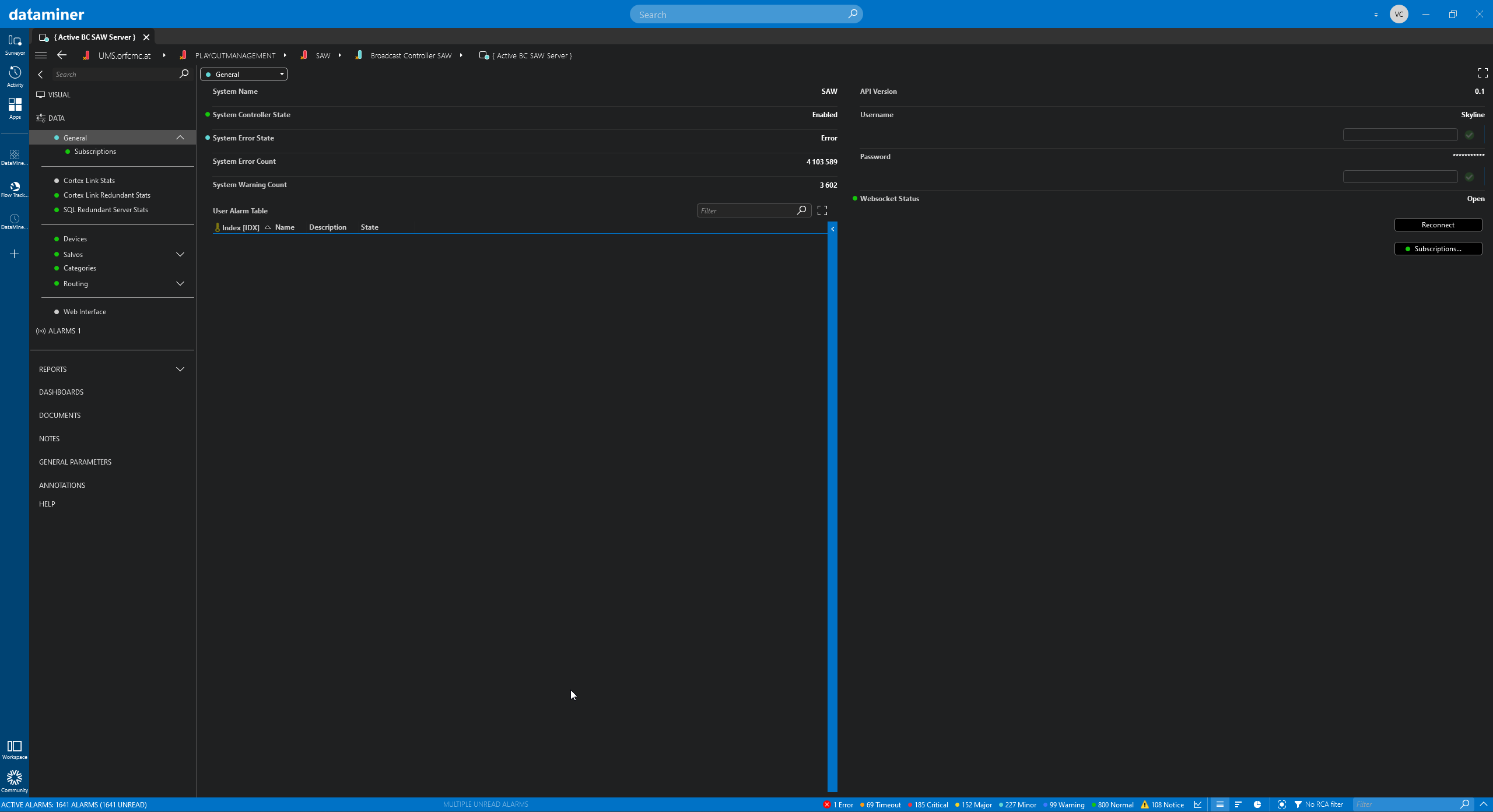 General: This page is where you can configure and monitor the connection with Cerebrum. The connector uses a mix of SNMP and WebSocket communication.
General: This page is where you can configure and monitor the connection with Cerebrum. The connector uses a mix of SNMP and WebSocket communication.
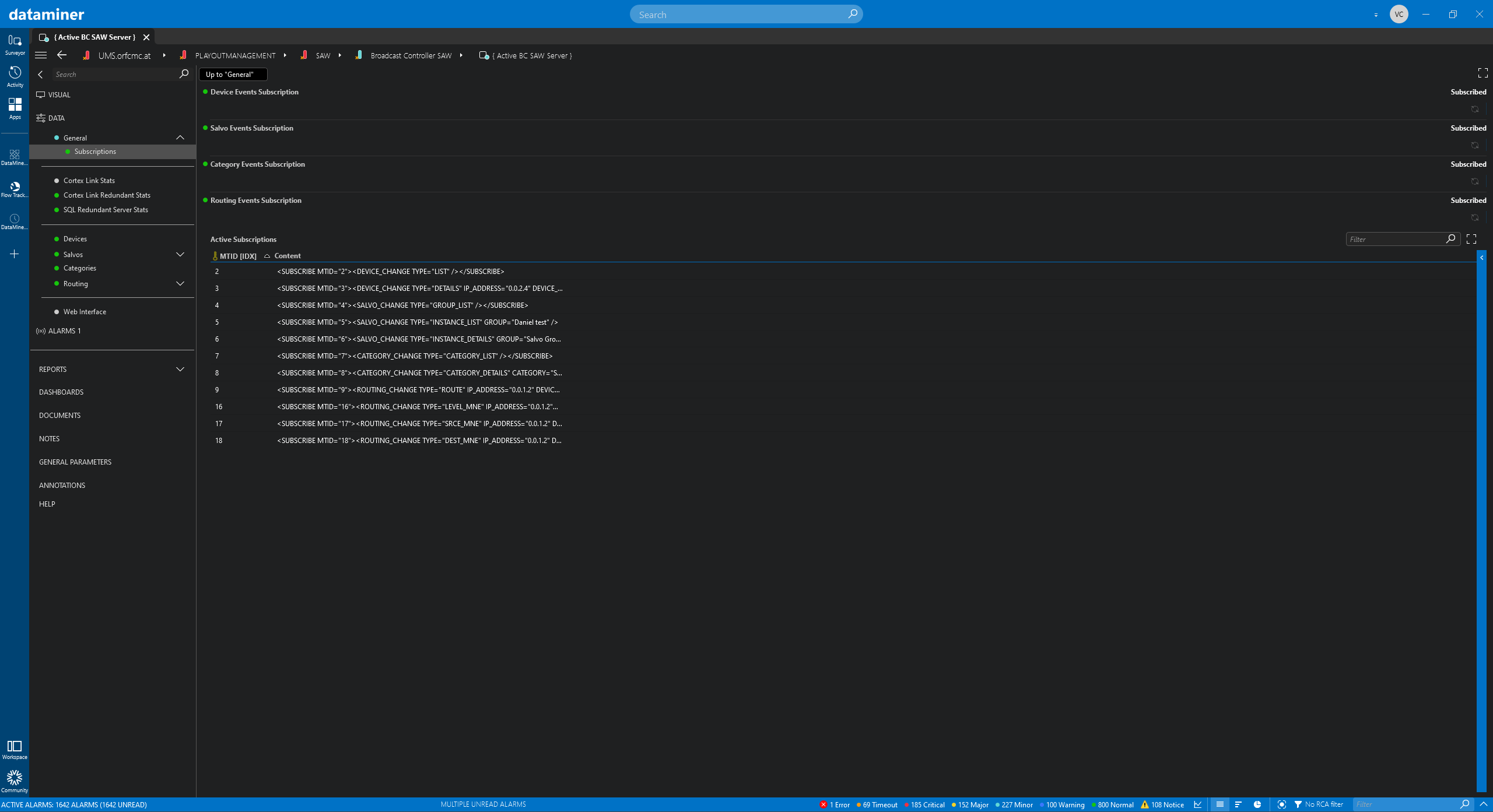 Subscriptions: You can choose to subscribe to all data or to retrieve just some of the data.
Subscriptions: You can choose to subscribe to all data or to retrieve just some of the data.
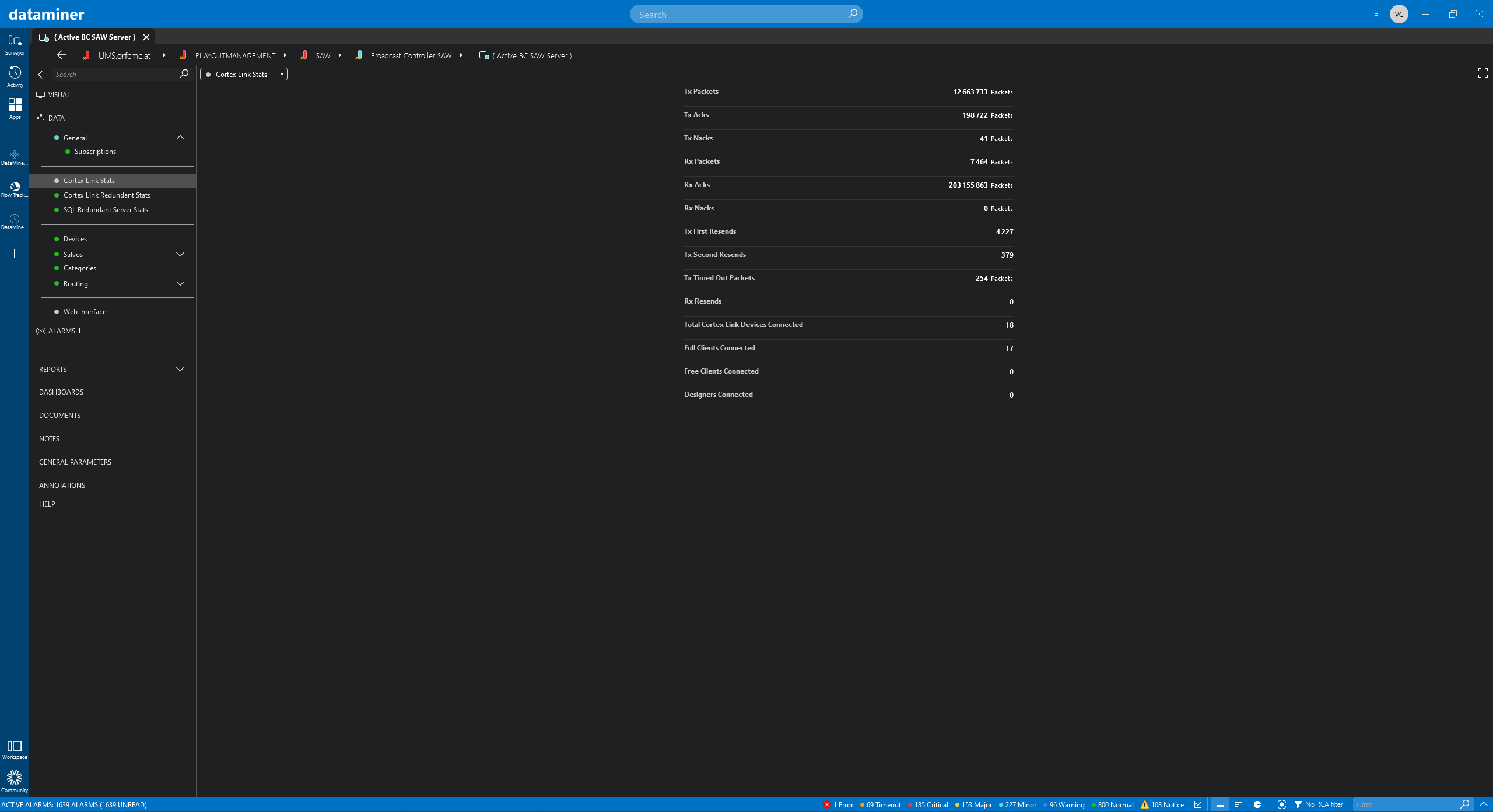 Cortex Link Status: Here you can see Cortex link Rx and Tx information and the connected clients/devices.
Cortex Link Status: Here you can see Cortex link Rx and Tx information and the connected clients/devices.
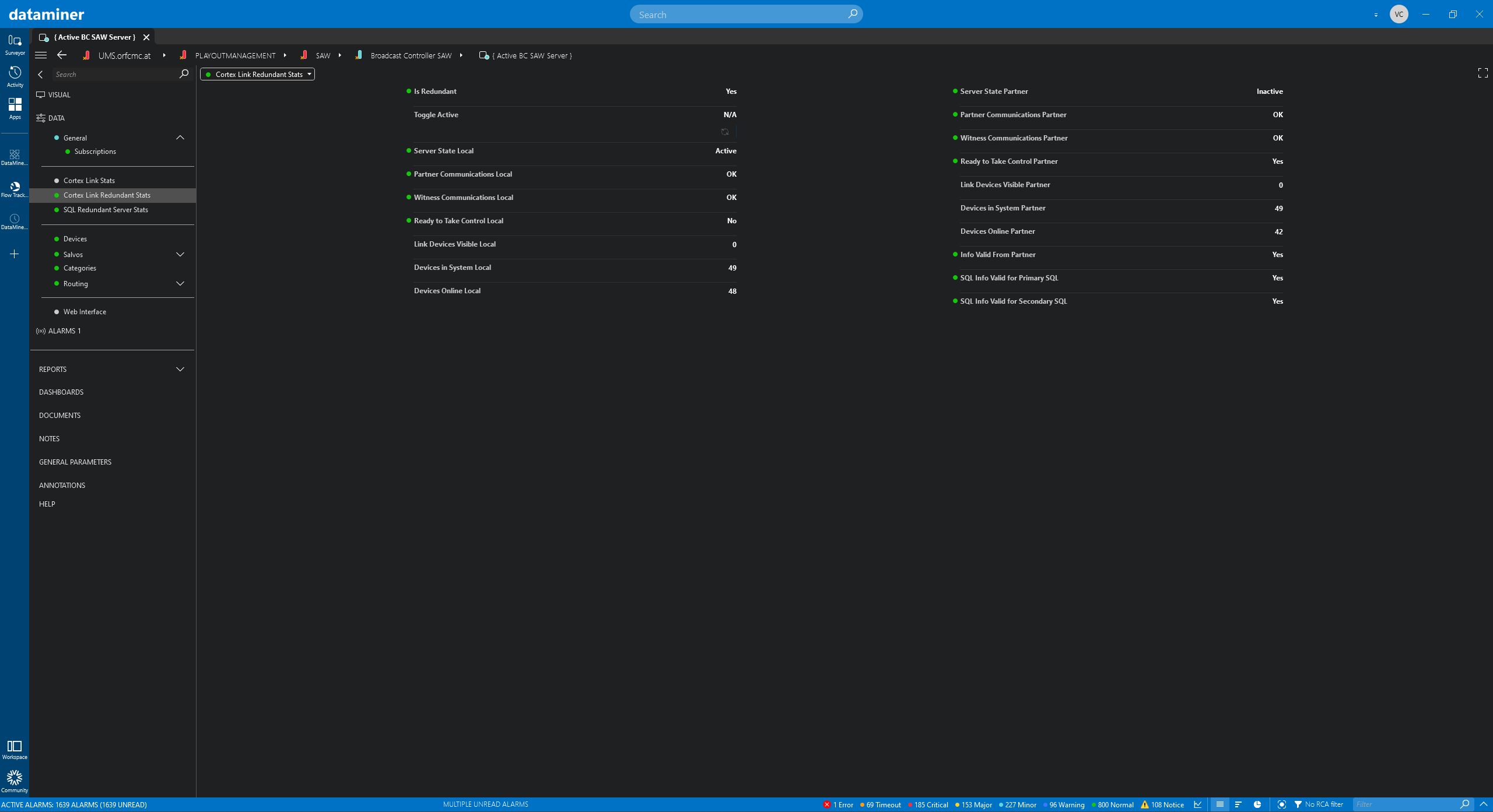 Cortex Link Redundant Status: This page shows the redundant stats of the cortex link.
Cortex Link Redundant Status: This page shows the redundant stats of the cortex link.
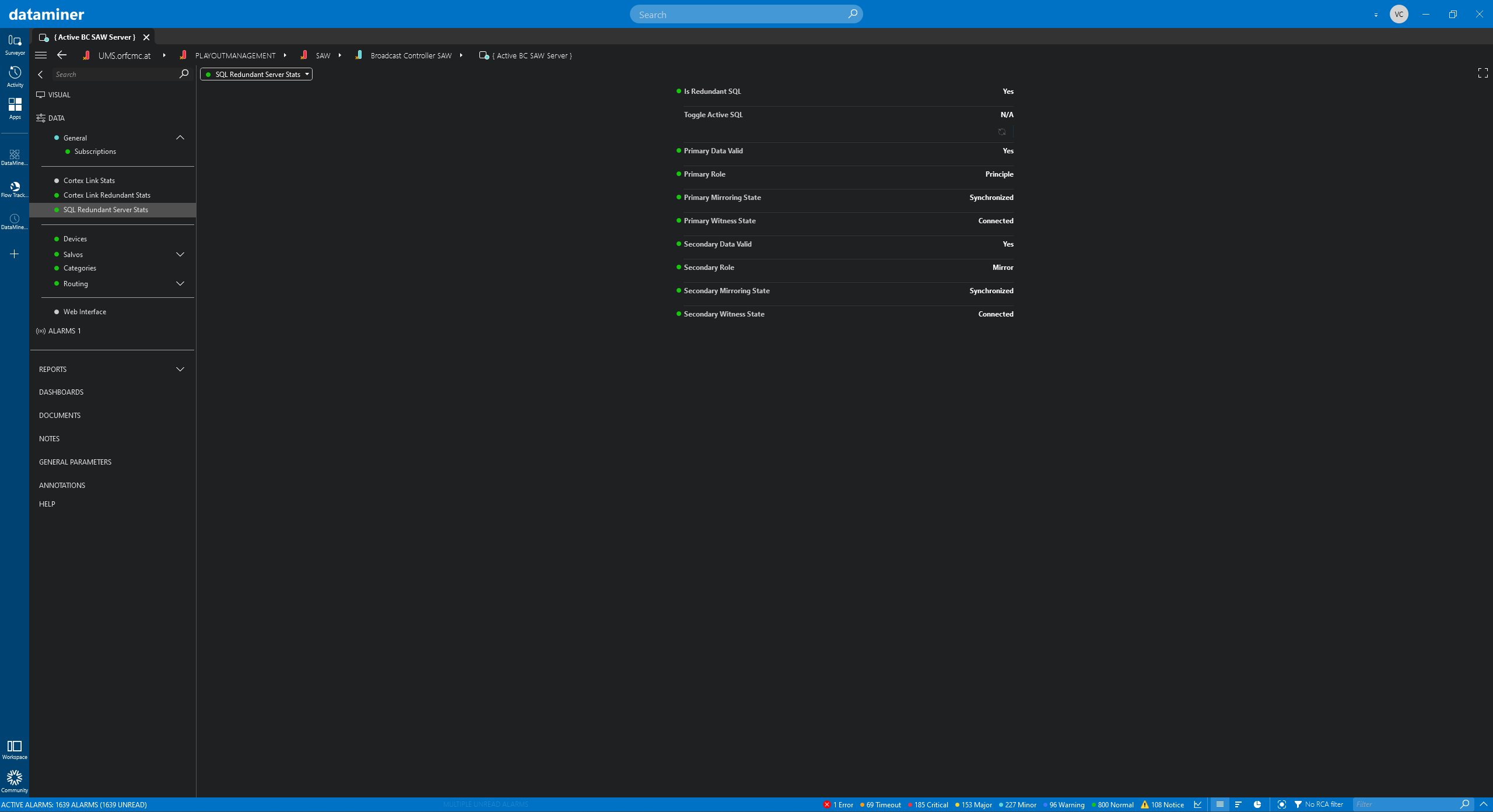 SQL Redundant Server Stats: The primary and secondary data and the SQL.
SQL Redundant Server Stats: The primary and secondary data and the SQL.
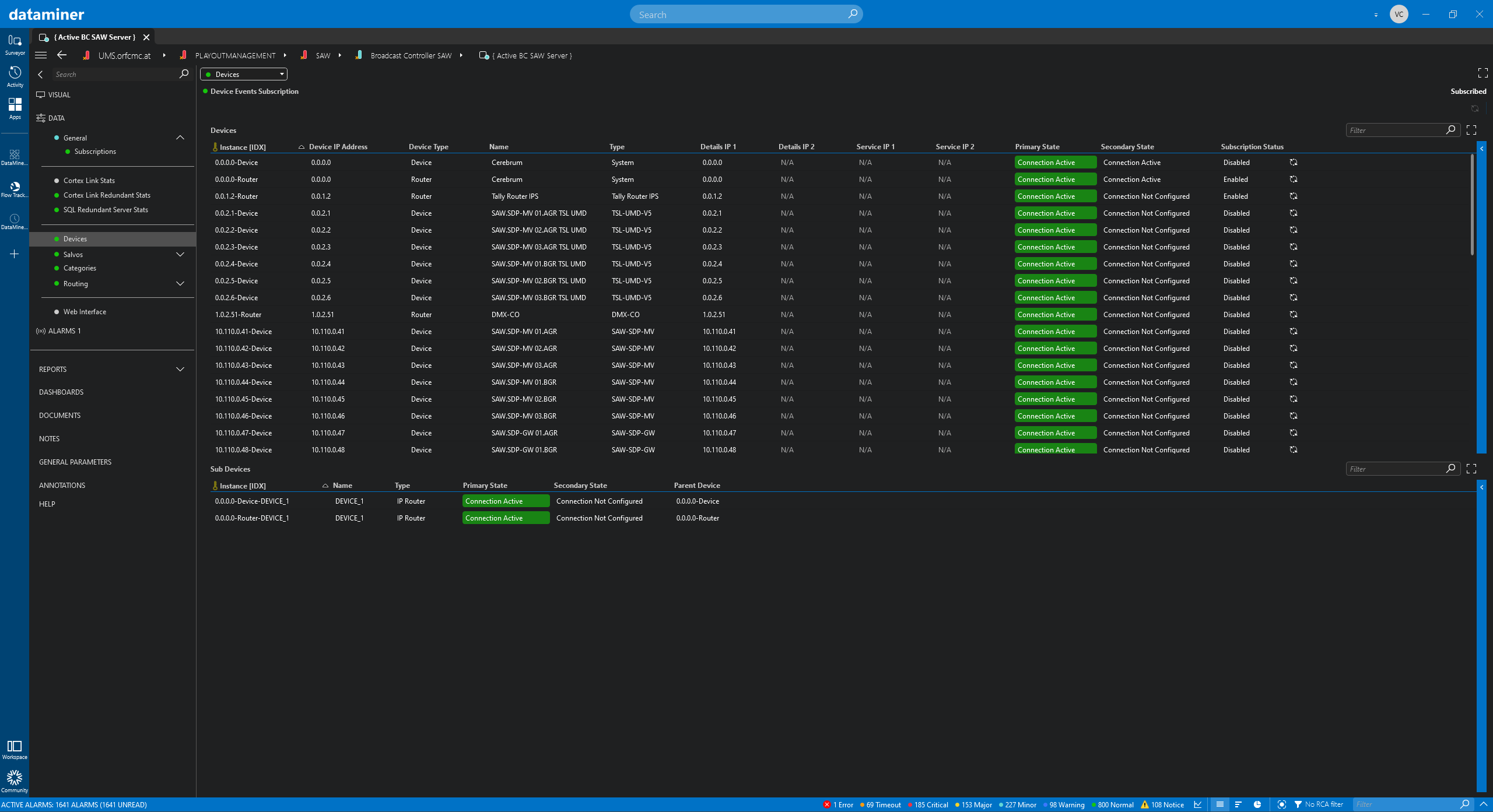 Devices: A list of devices with the details of each device and the subdevices of that device. These are the devices controlled by Cerebrum for ad-hoc parameter control.
Devices: A list of devices with the details of each device and the subdevices of that device. These are the devices controlled by Cerebrum for ad-hoc parameter control.
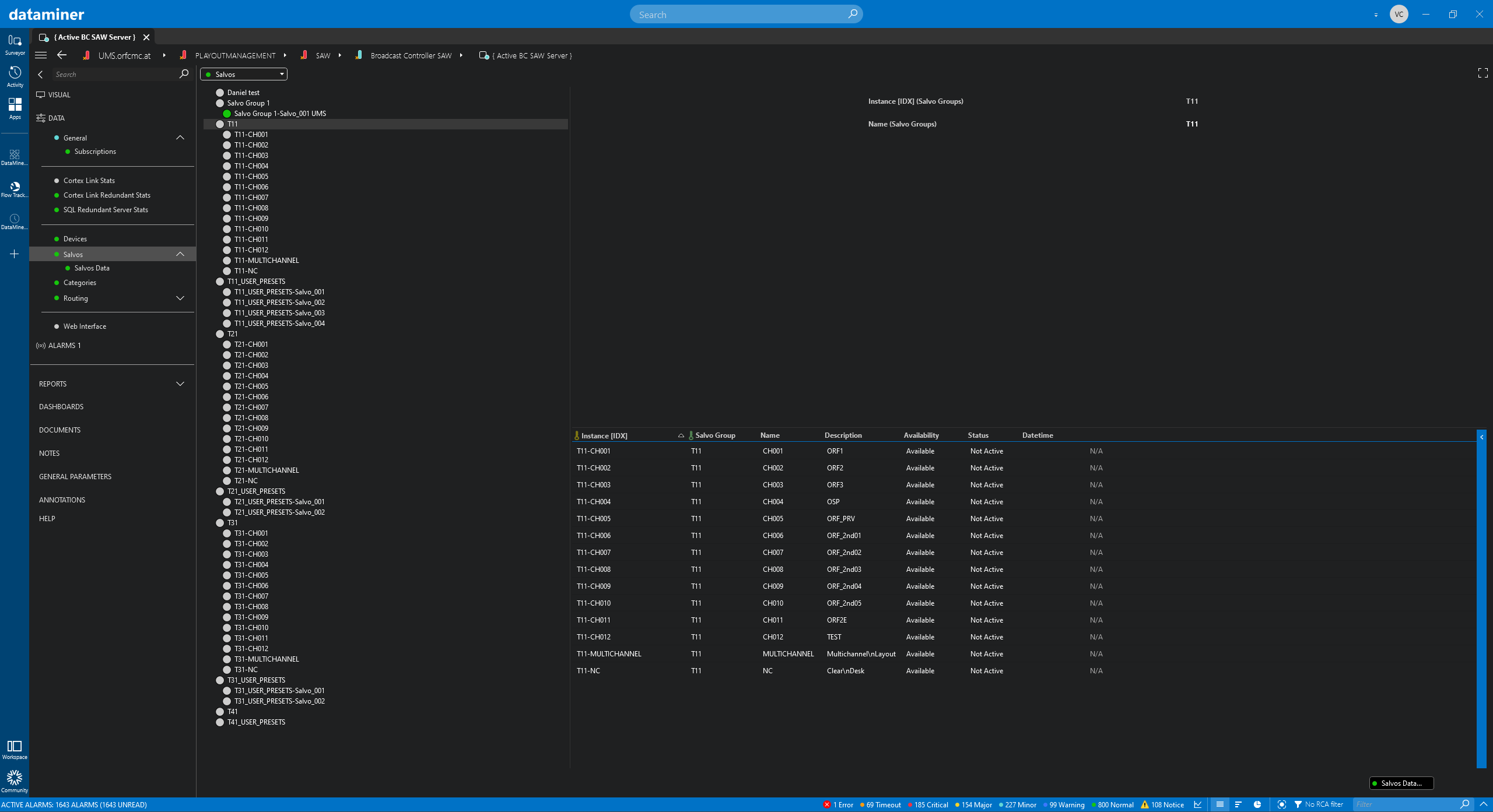 Salvos: The salvo list with the instances for each salvo and details.
Salvos: The salvo list with the instances for each salvo and details.
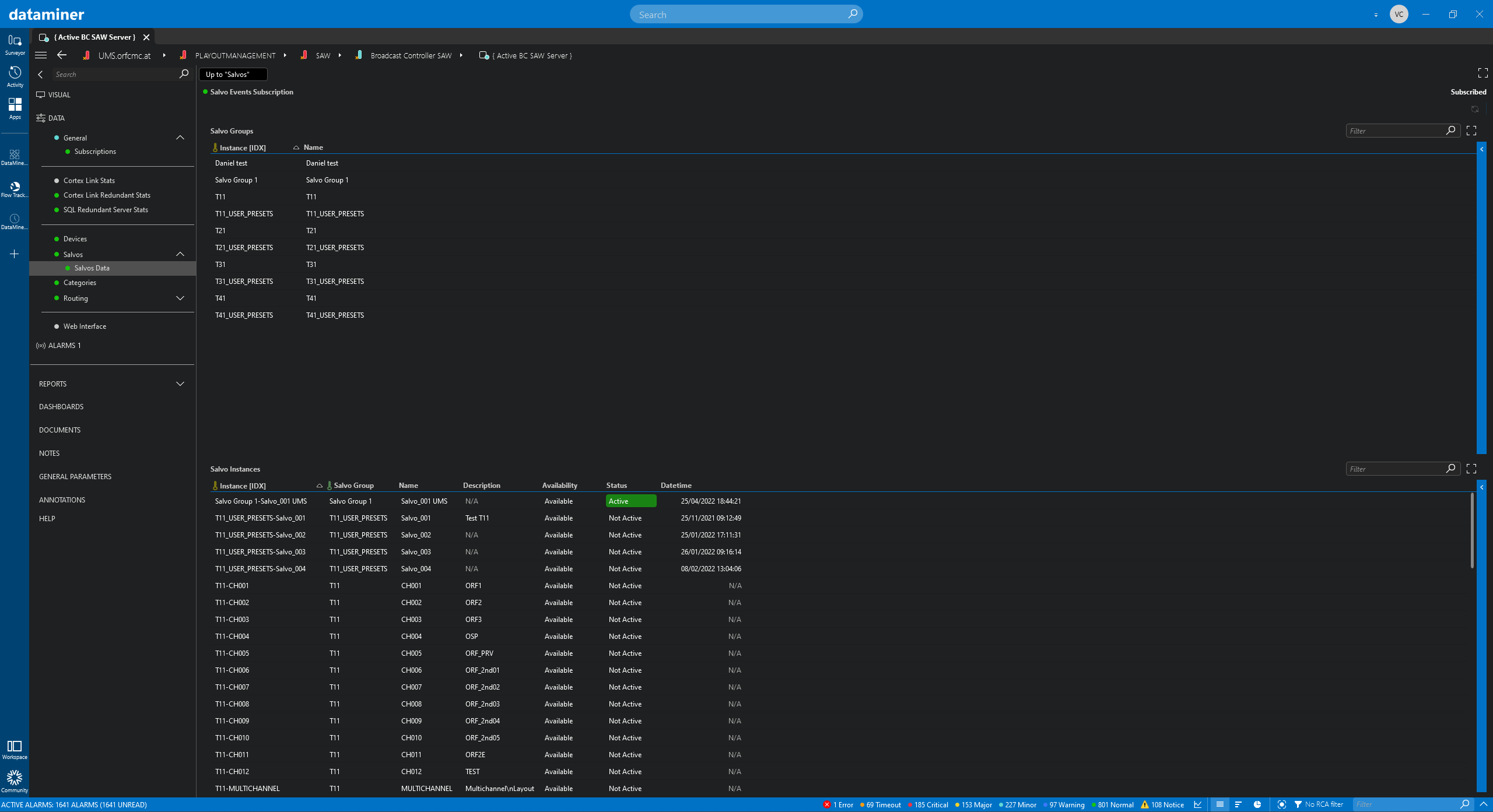 Salvos Data: The salvo groups and instances.
Salvos Data: The salvo groups and instances.
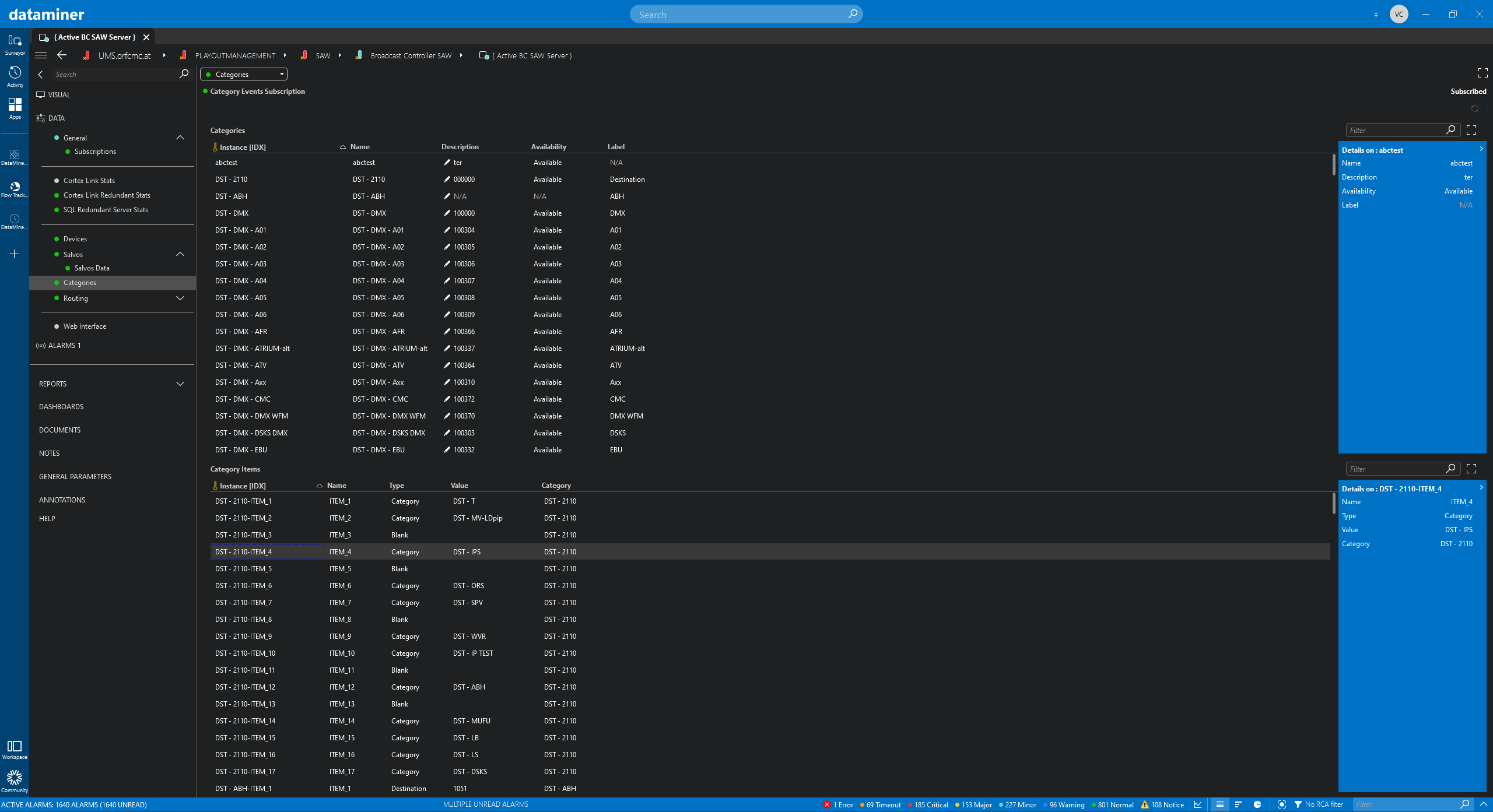 Categories: This page shows a category list with the category details and items.
Categories: This page shows a category list with the category details and items.
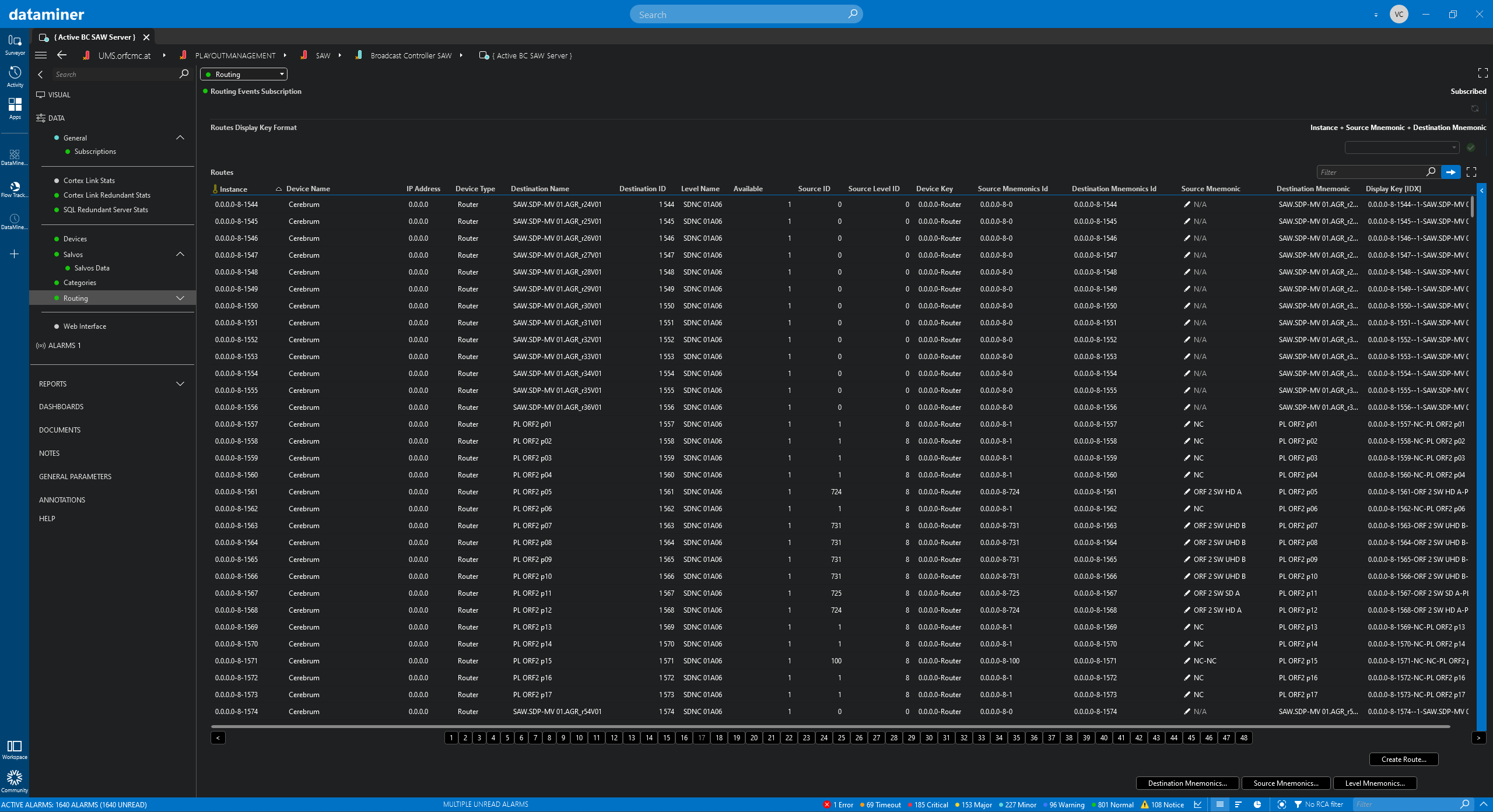 Routing: This page contains the Route Change table. You can fill in the parameters at the top to subscribe to a route. Three page buttons provide access to subpages with the Level Mnemonics, Source Mnemonics, and Destination Mnemonics tables, respectively.
Routing: This page contains the Route Change table. You can fill in the parameters at the top to subscribe to a route. Three page buttons provide access to subpages with the Level Mnemonics, Source Mnemonics, and Destination Mnemonics tables, respectively.
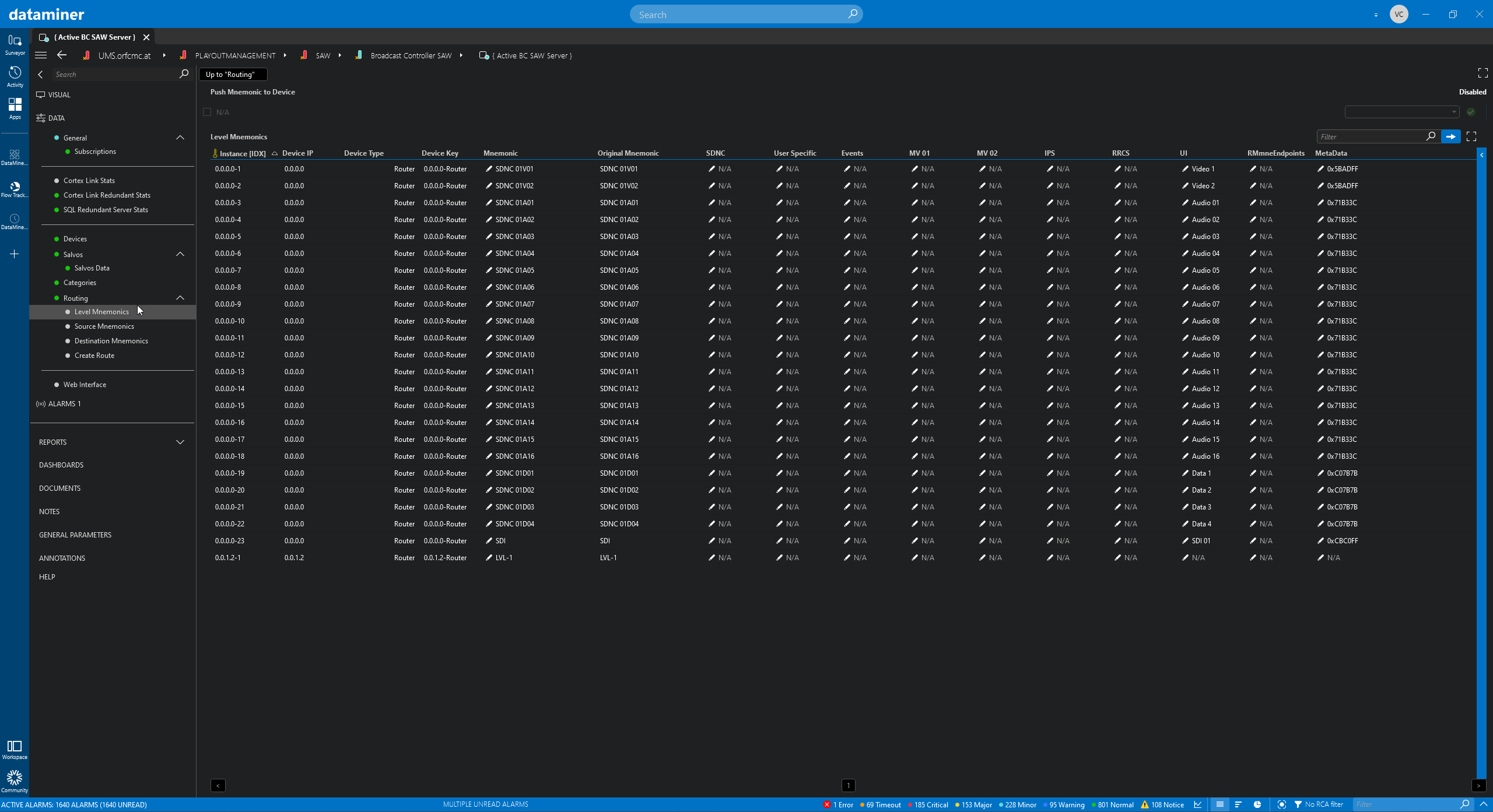 Level Mnemonics subpage
Level Mnemonics subpage
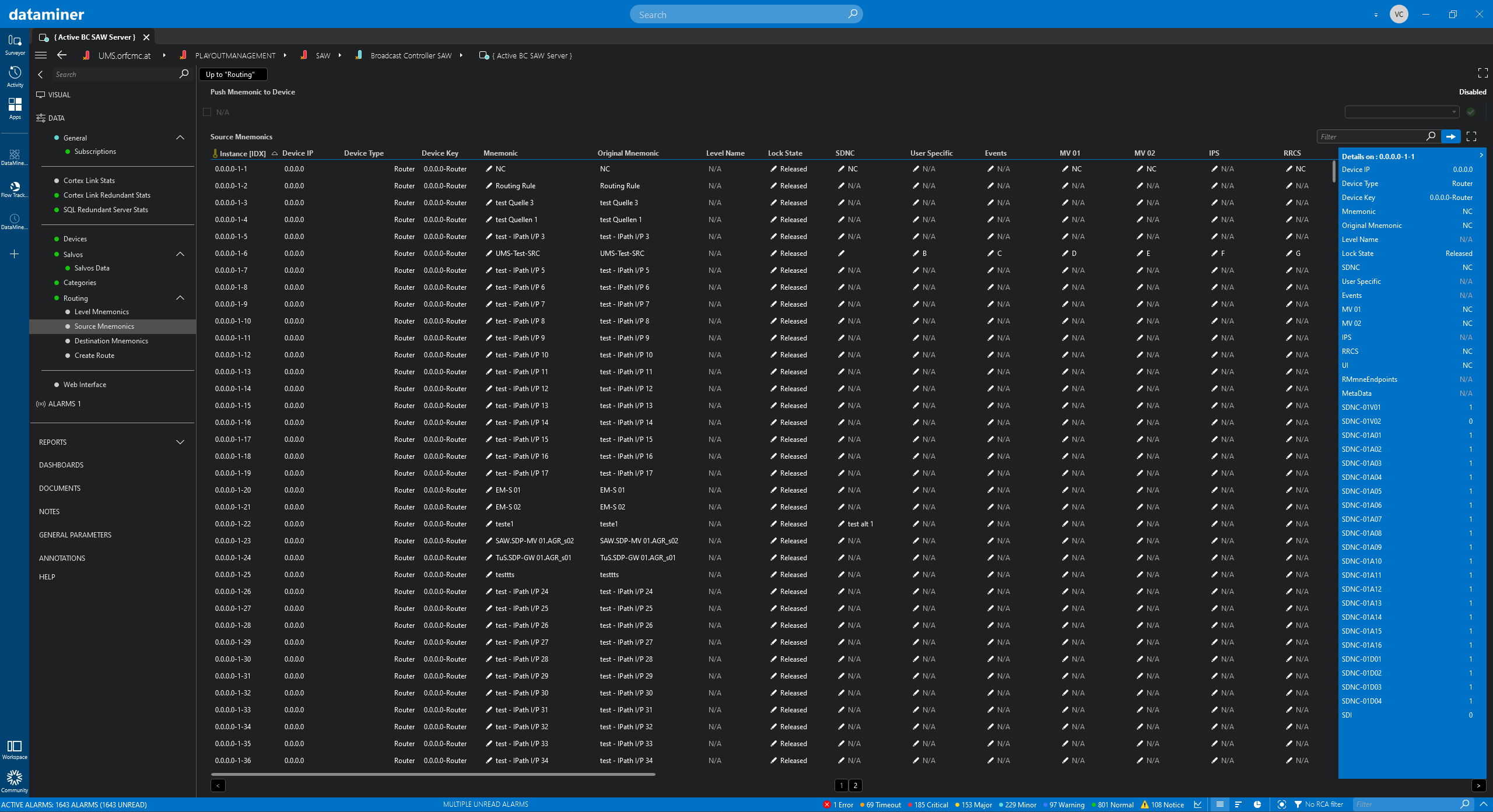 Source Mnemonics subpage
Source Mnemonics subpage
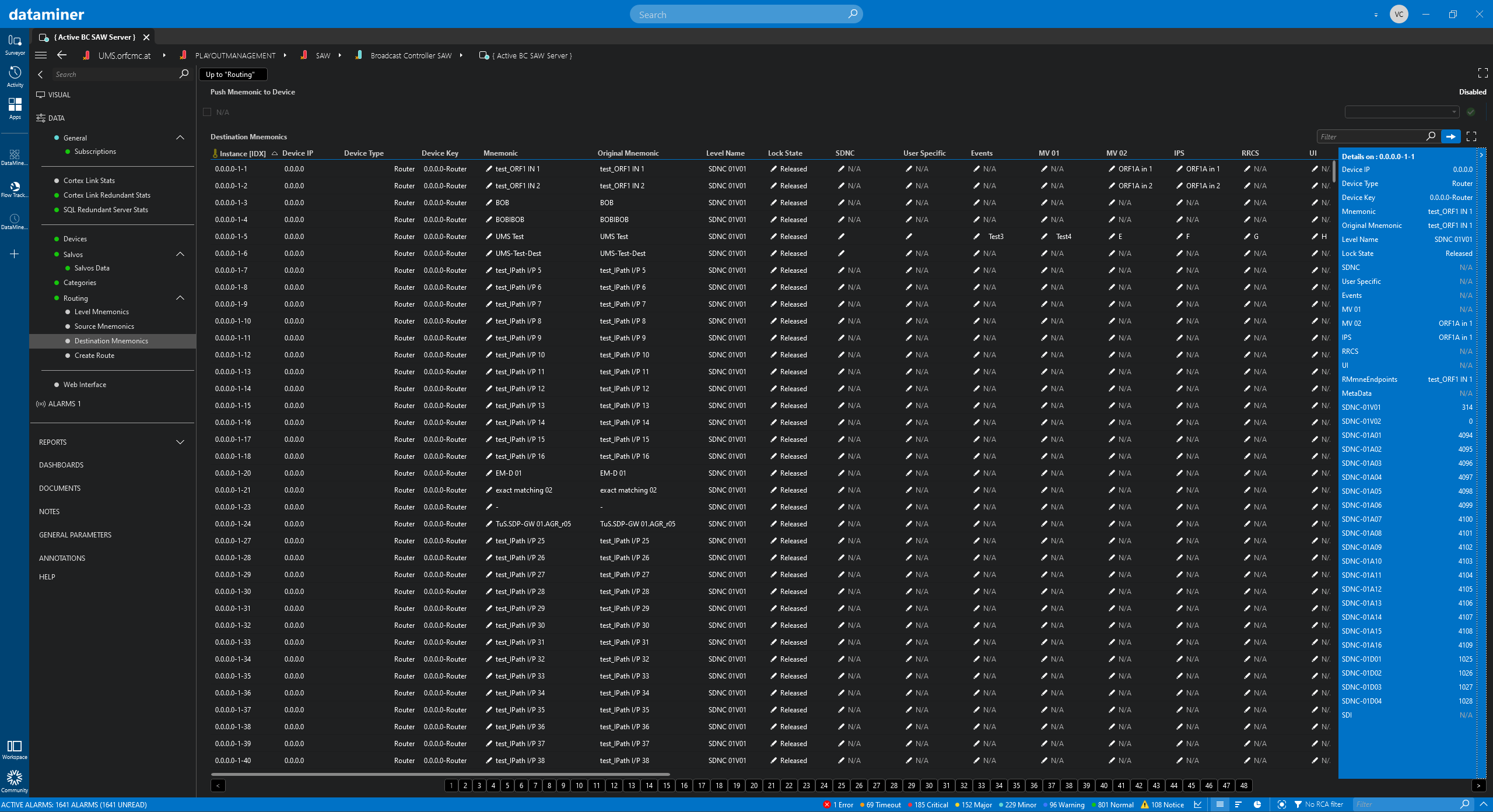 Destination Mnemonics subpage
Destination Mnemonics subpage
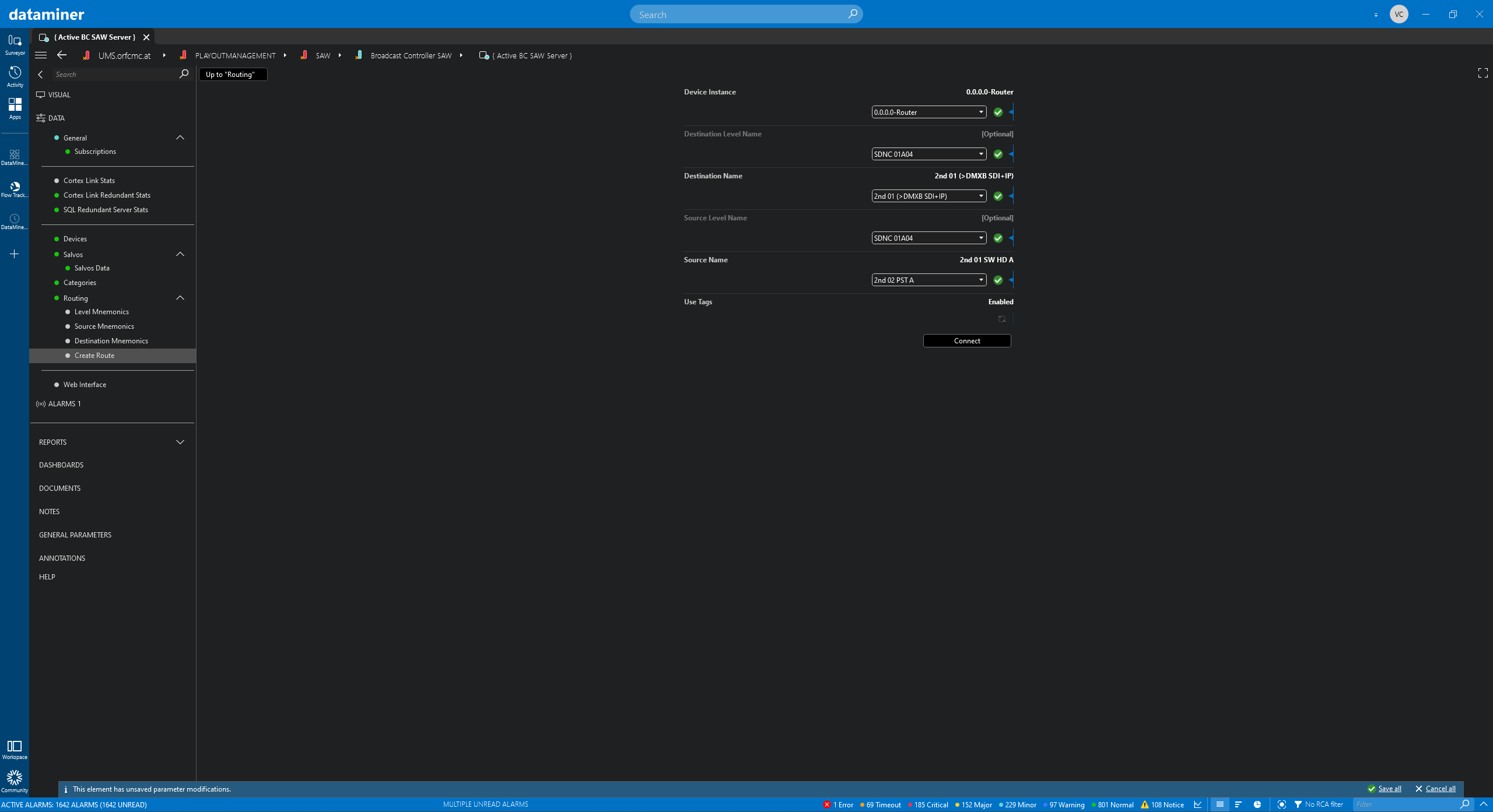 Create Route: Set crosspoints across any defined router level in Cerebrum.
Create Route: Set crosspoints across any defined router level in Cerebrum.